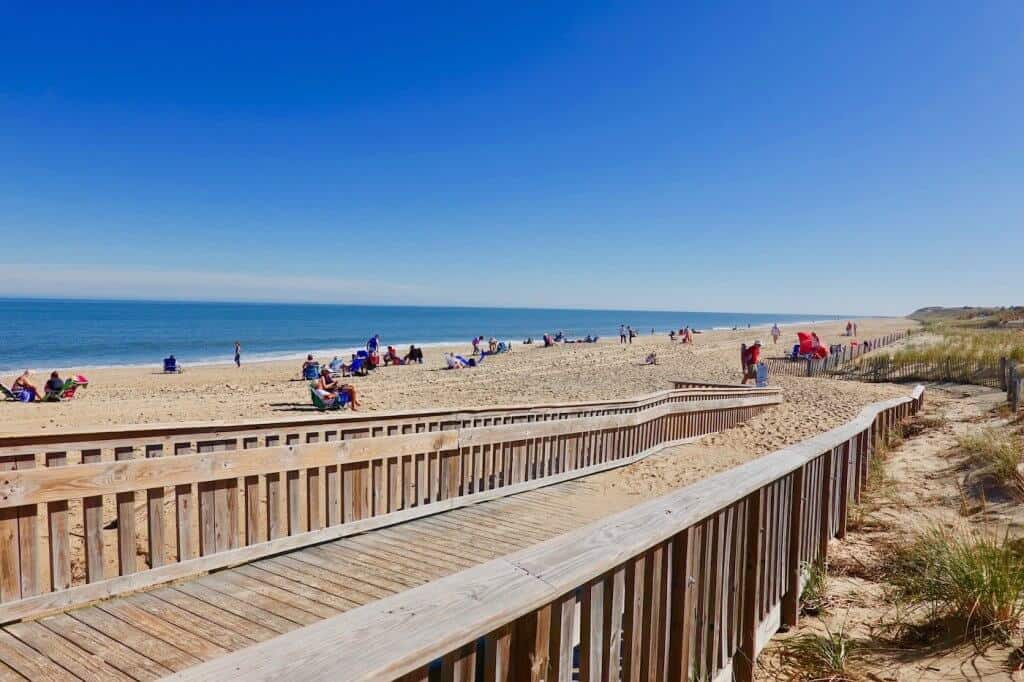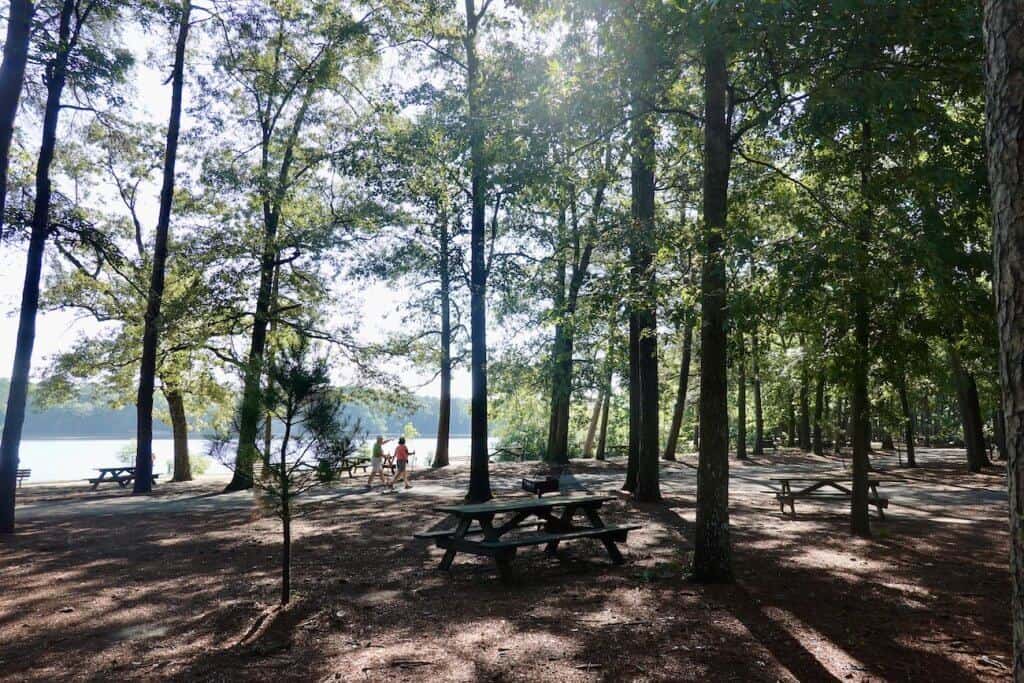The Bay of Fundy lies between New Brunswick and Nova Scotia, two Atlantic Canadian provinces. What makes this body of water unique is that it has incredible tidal changes each day (low tide to high tide). Worldwide, tidal changes (low to high tide) average under 4 feet/1.2 meters. Here, tidal changes are the largest in the world and can be up to 50 feet/15 meters! Plus the Bay of Fundy has amazing cliffs that hold prehistoric relics dating back hundreds of millions of years. Besides all that, the Bay of Fundy region has lots to see and experience. Several of these sites are only about within a 1.5-hour drive from Halifax, the province’s capital. My husband and I were awed by this amazing geological phenomenon and really enjoyed exploring the Bay of Fundy coastline. This article highlights eight great ways to experience this beautiful region along the Nova Scotia coastline.
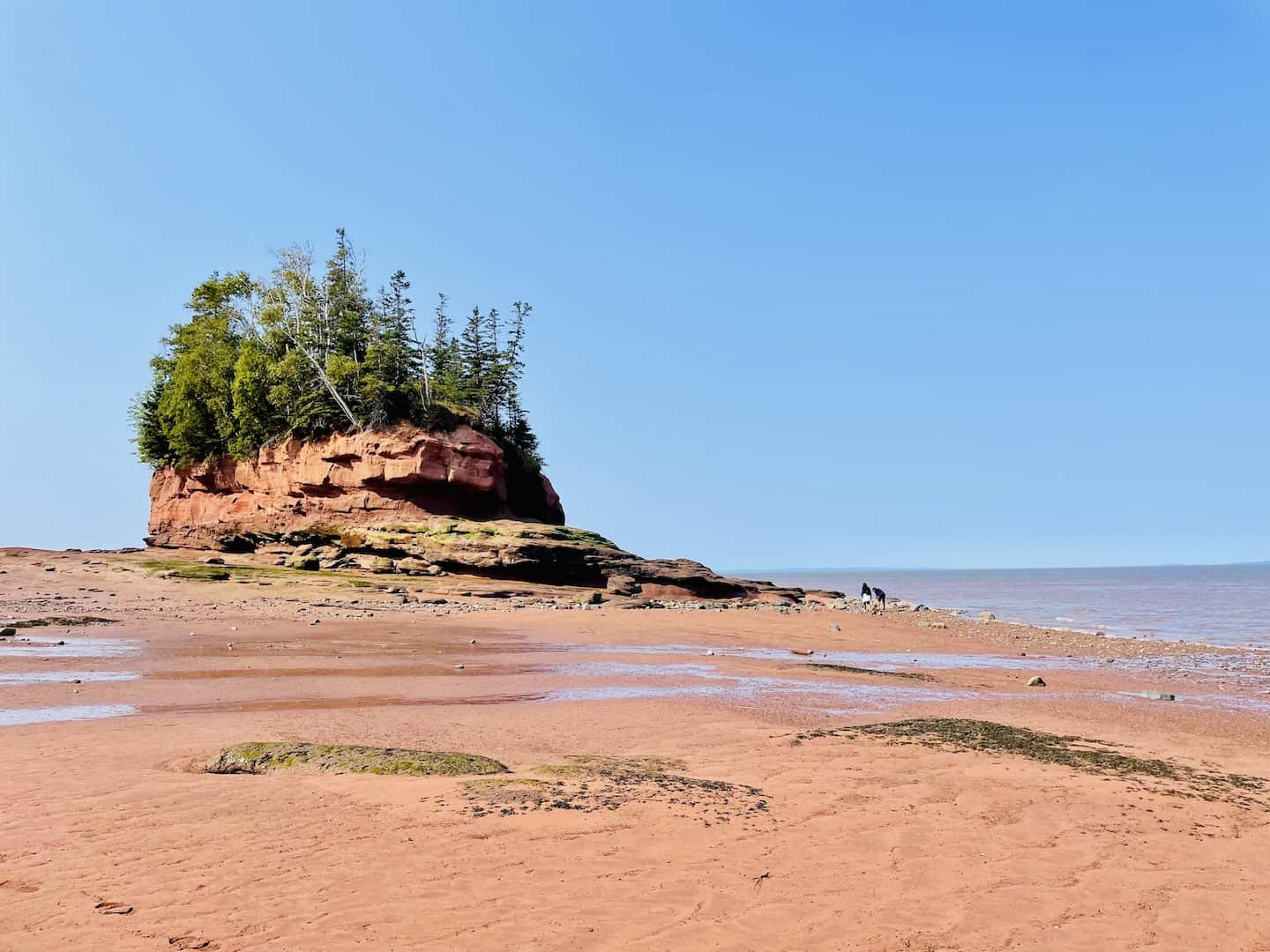
1. Walk on the Ocean Floor
When the tide is out, you can actually walk on the ocean floor. You can do this informally at a number of shoreline spots. But one of the best places to experience being on the ocean floor is Burntcoat Head Park. Walk down the steps and onto the muddy flats, where you can look up and view the scenery from a lower vantage point. Look down, and you may see some interesting sea life.
When walking on the ocean floor, remember to wear sturdy shoes that you don’t mind getting wet or dirty. There is a foot wash to clean your shoes after you ascend the stairs. In addition, the park has a lighthouse to view, walking trails, lookout viewpoints, and picnic areas. Check Burntcoat Head Park’s website for a current list of low and high tides. The park is open from mid-May through mid-October from dawn to dusk. Location: 45 Faulkner Lane, Noel
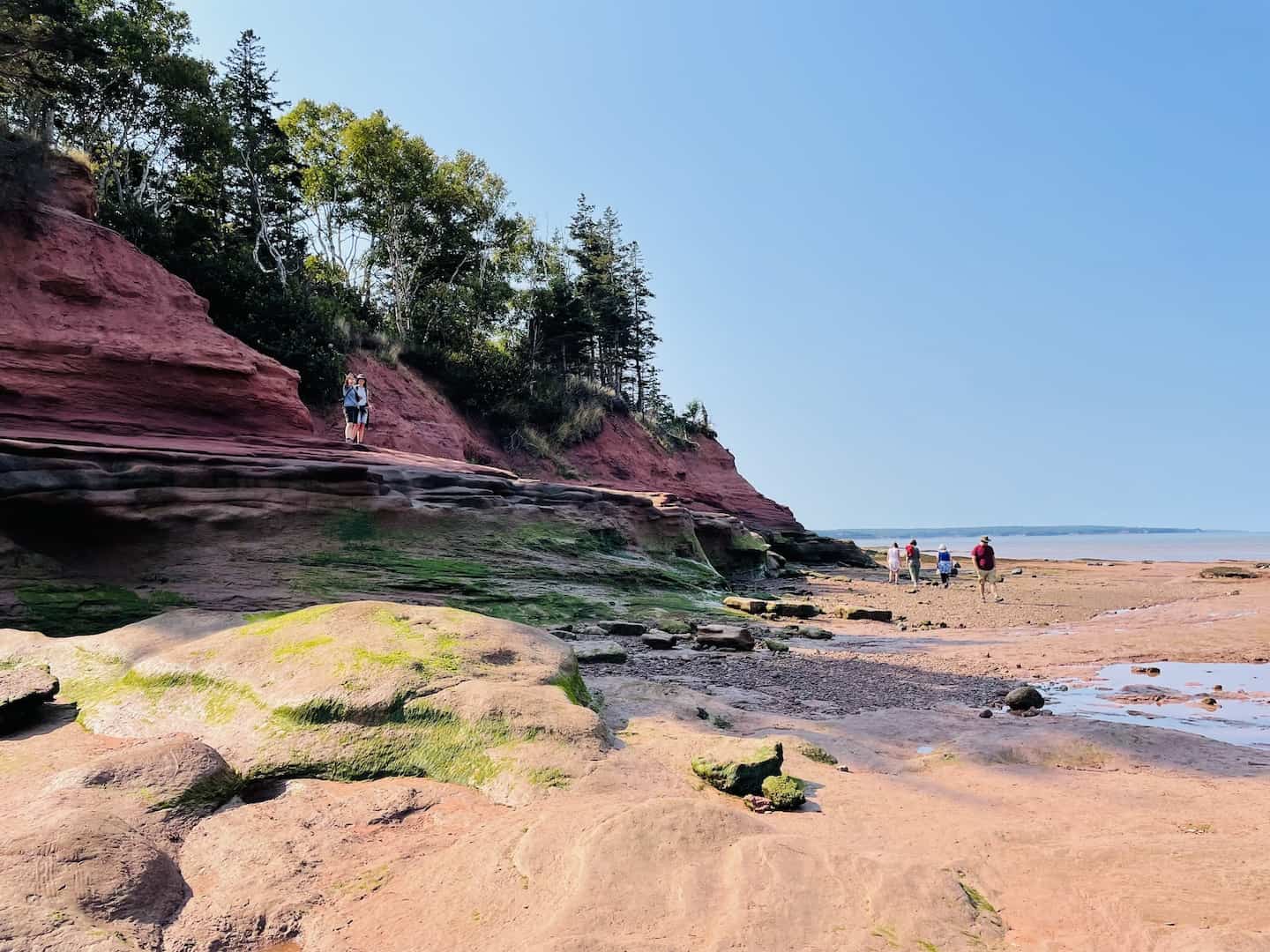
2. View the Tidal Bore
Catch views of the tidal bore – the technical term for when the water comes rushing into the bay after low tide – at places where rivers connect to the Bay of Fundy.
One great place to view the tidal bore is the Fundy Discovery Site in Truro. Stand along the bank and wait for the water to come rushing in from the Salmon River – right in front of you. There is an information center as well as a play area for kids to keep them occupied while adults are waiting for the bore to come through. Location: 103 Tidal Bore Rd, Lower Truro, Nova Scotia
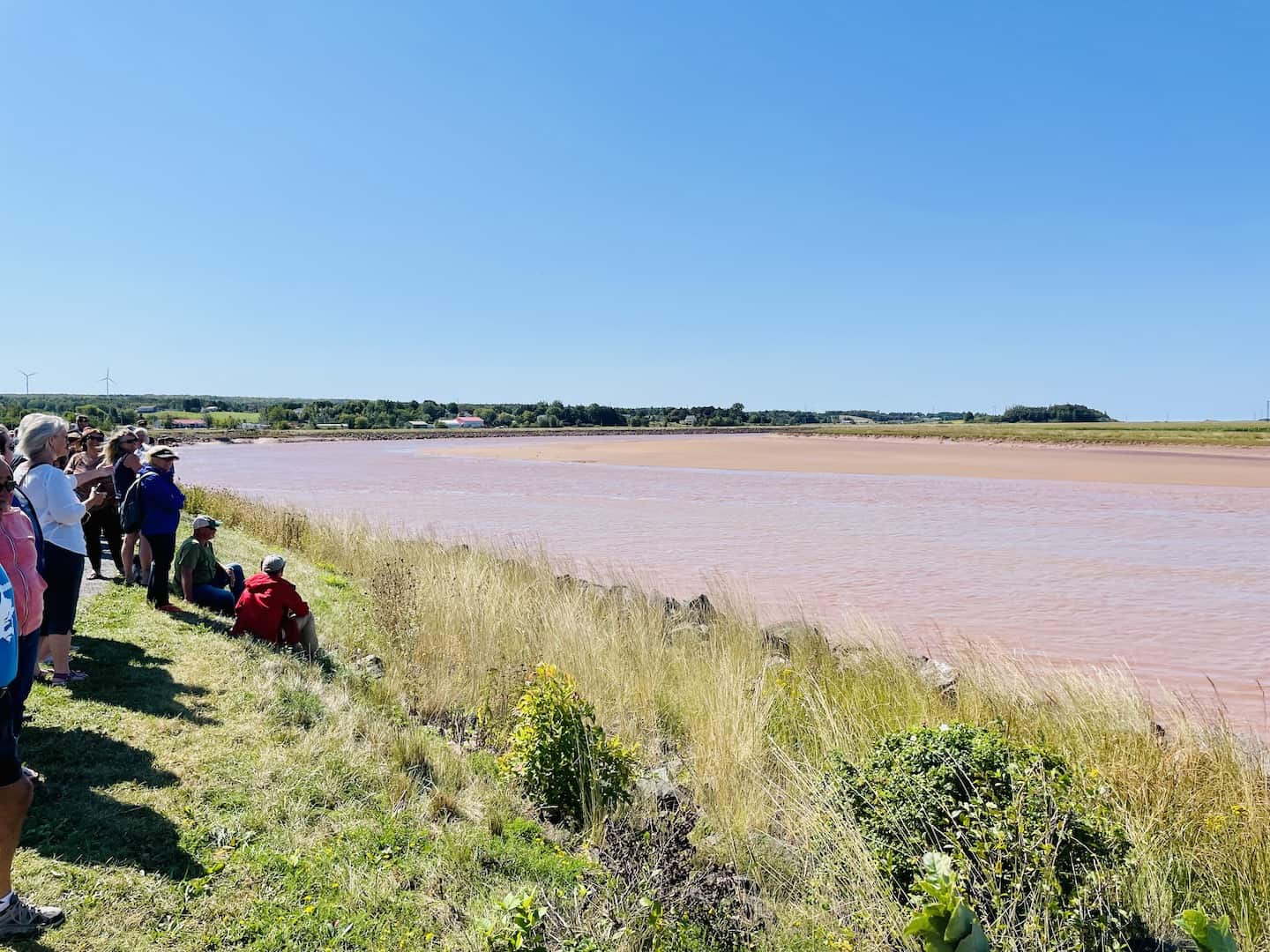
Another good spot is the Fundy Tidal Interpretive Centre in South Maitland (about a 20-minute drive away) which has an extended, elevated observation deck, making it easy to view the tidal bore on the Shubenacadie River. This site also has an information center and nature trail. Location: 9865 Hwy 236, South Maitland, Nova Scotia
These two sites are staffed from mid-May to mid-October (but you can visit anytime just to view the tidal bore). Check the tides chart the centers publish online (changes from season to season) to help time your visit to coincide with a tidal bore.
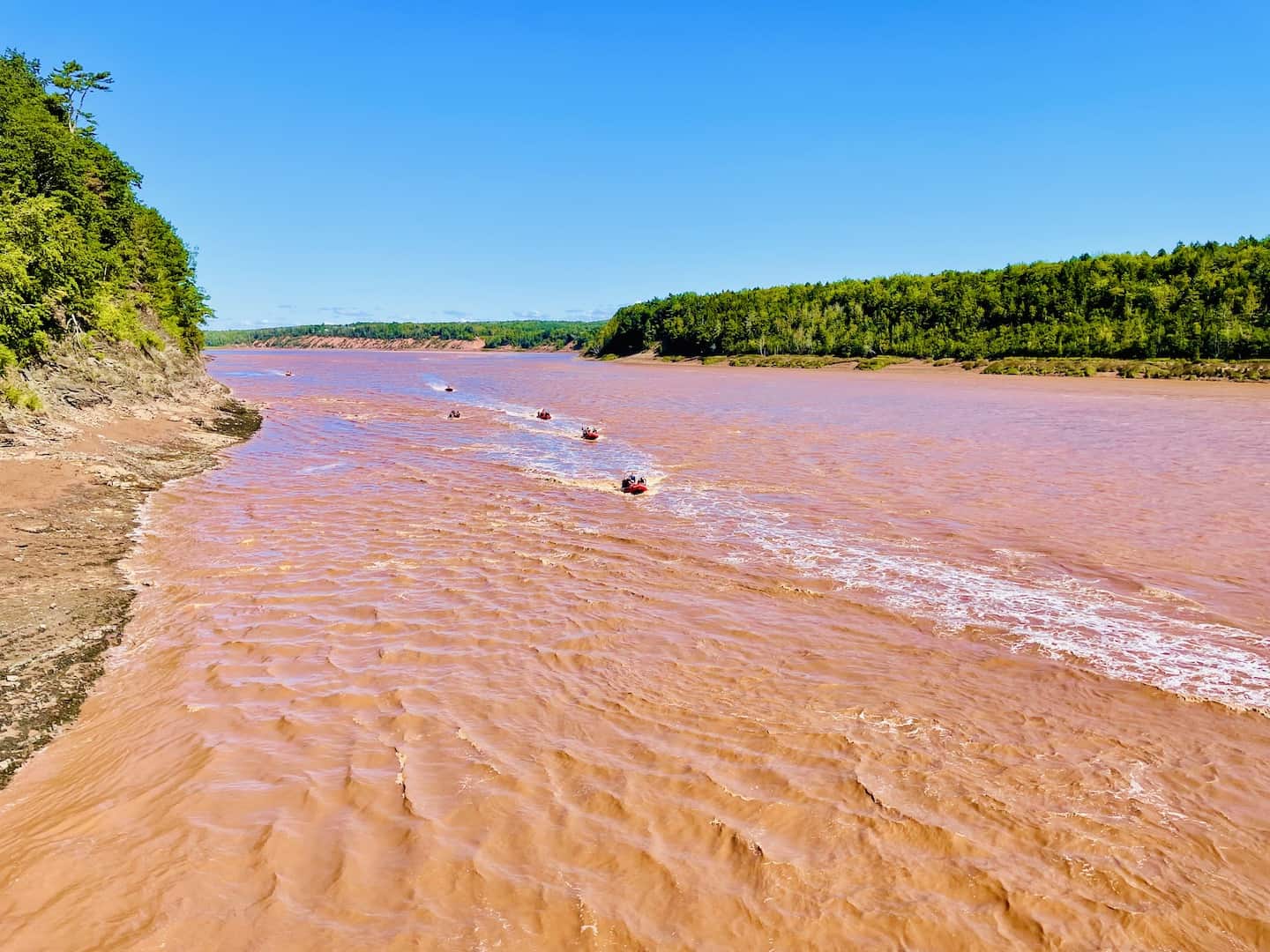
3. Ride the Tidal Bore
Enjoy Zodiac raft trips that ferry you downstream along the Shubenacadie River at low tide to catch the tidal bore heading upstream. Trips are available from May to October and are dependent on the tides. Do an online search for “tidal bore rafting” to find rafting tours. (No direct links are included due to changes in operation for some companies.)
4. Discover Dinosaur Fossils
Fossils abound in the Bay of Fundy, and one of the best places to visit is Joggins Fossil Cliffs, a UNESCO World Heritage Site and a UNESCO Biosphere Reserve. Start at the visitor center to gain some context about these geological wonders. Then choose to wander the beach on your own or take a tour. Guided tour options range from 30 minutes to several hours. The best time to visit is during low tide (check Joggins website for their tidal schedule). Joggins Fossil Cliffs is open daily from May through mid-October. Location: 100 Main Street, Joggins (northwestern Nova Scotia)
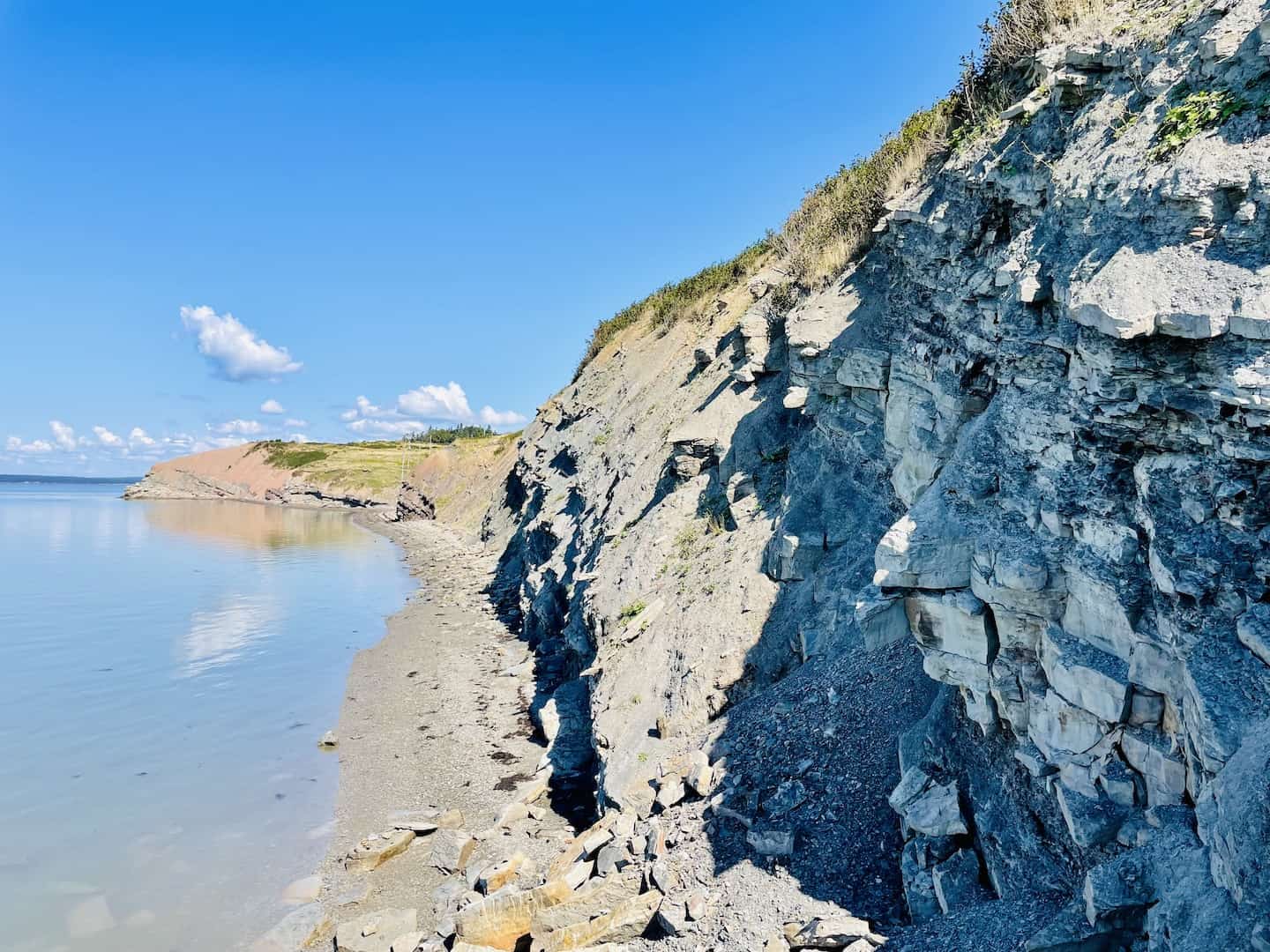
5. Hike Along the Coastline
Several scenic trails hug the Bay of Fundy coastline. All treks listed below offer unique views and are considered easy to moderately challenging. For more hiking options, check out AllTrails. Parks and trails are listed below in order from north to south along the Bay of Fundy coastline in Nova Scotia.
Chignecto Provincial Park
Chignecto Provincial Park offers two loop trails (rated easy to moderately challenging) that take you along the coastline and provide incredible views of the bay as well as unique rock formations. There are two main loop trails in the Eatonville Day-Use area. One 1.5 mile/2.4 km loop heads from the parking lot to a lookout for the popular Three Sisters sea stacks. The other loop trail is 1.7 mile/2.7 km, heads north, and has great views of coves. Combine the two to enjoy all the views.
Reaching these trails can be a little tricky as a good part of the road in is unpaved, which may be difficult unless you’re driving a 4×4 or similar vehicle. Also, GPS may want to direct you to a different part of the provincial park, so enter Eatonville Three Sisters Trail or Cape Chignecto Coastal Trail into your GPS. (If you enter Cape Chignecto Provincial Park into GPS, you will most likely go 45 minutes out of the way to a different entrance and need to double back. We did.)
To reach the Eatonville Day-Use area, approach from Route 209. Turn onto Apple River Road, which will turn into Eatonville Road. Part of it is a packed dirt and gravel road for about 9 miles/15 kilometers. Turn right at the large orange sign that says Eatonville. Proceed to the parking lot. Location: northwest of Advocate Harbor, Nova Scotia
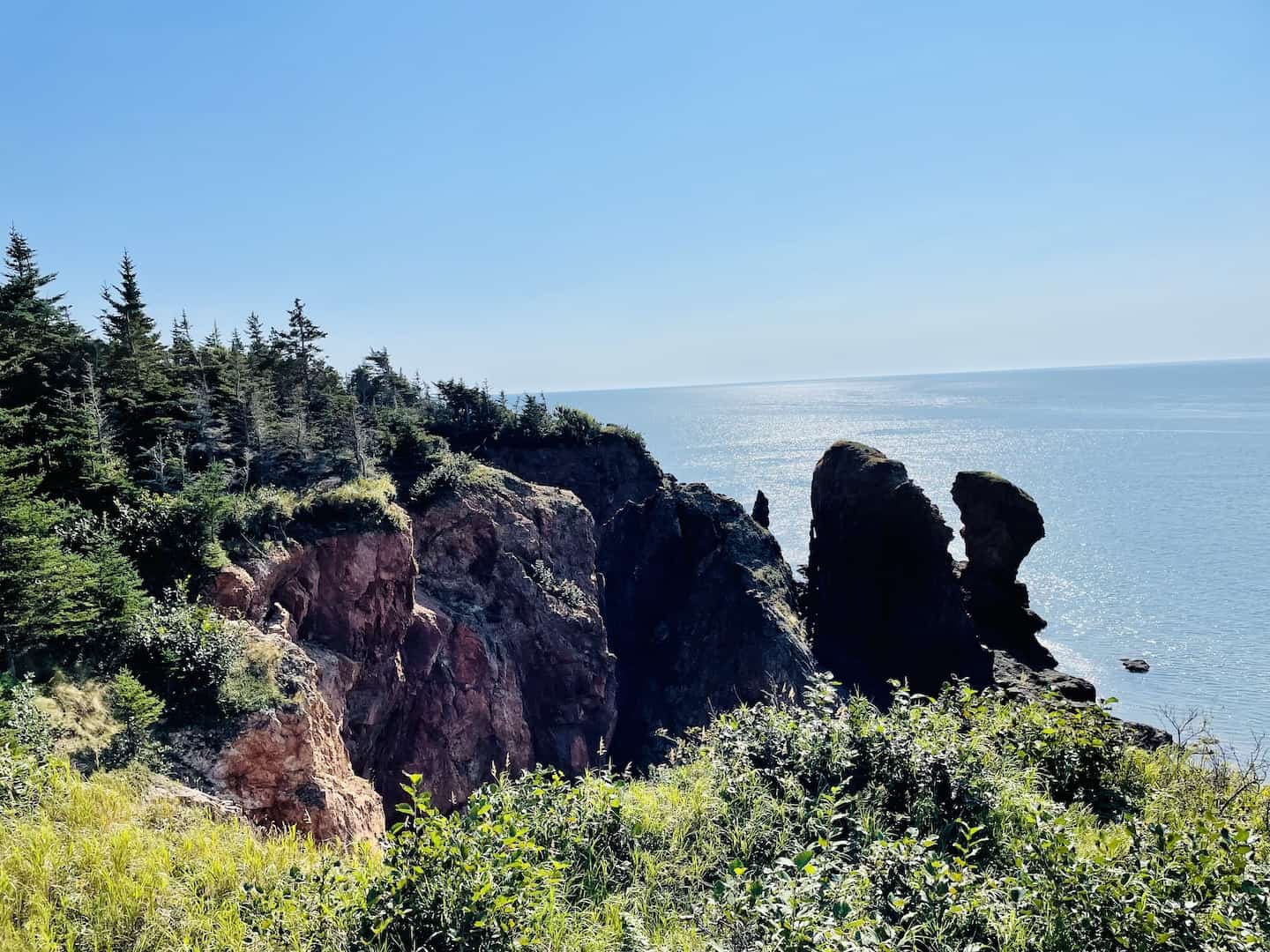
Cape Split Provincial Park
Cape Split Provincial Park is a popular park that’s located along the coast and boasts stunning views from the lookouts. The Cape Split Trail is a 7.5 mile/12-kilometer out-and-back trail that’s rated moderately challenging. Another popular trail is the Cape Split Loop Trail, a 9-mile/14.5-kilometer loop trail that’s rated hard. Cape Split Provincial Park trails are accessible year-round, but the facilities are only serviced from mid-May to mid-October. The park is located Location: 999 Cape Split Road, Canning, Nova Scotia – 9 miles/14.5 km from Wolfville
Blomidon Provincial Park
Blomidon Provincial Park has a 7.8 mile/12.5 km moderately challenging loop trail with expansive Bay of Fundy views. Look for the Jodry, Woodland, and Borden Brook trails at Blomidon Provincial Park. Location: 3138 Pereau Rd, Canning, Nova Scotia – 19 miles/31 km from Wolfville
Balancing Rock Trail
Balancing Rock Trail, near Tiverton, is a 1.4 mile/3.4 km out-and-back trail that takes you to a viewpoint to marvel at the incredible rock that looks like it’s balancing on another rock. What you see is a 20-ton piece of volcanic rock that looks like it’s about to fall into St. Mary’s Bay below. Balancing Rock Trail is located near. From the parking lot, the trail is fairly tame, but there are about 250 wooden steps down to the lookout. It’s worth it as the view is breathtaking! Location: near Tiverton, about 33 miles/53 km south of Digby (trailhead is along Route 217) on the island’s southwestern peninsula.
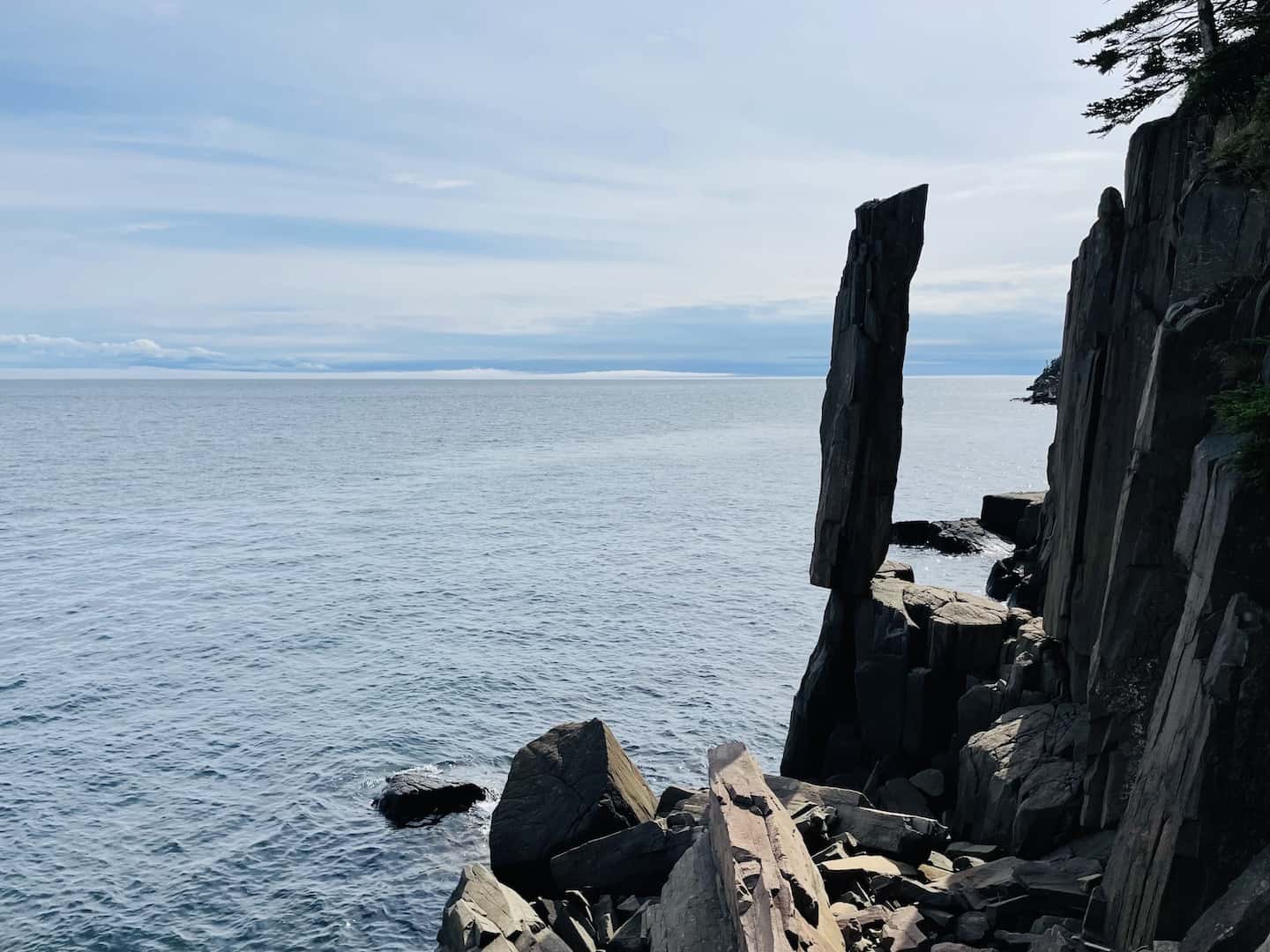
6. Kayak the Bay
Kayaking can be a great way to explore unique rock formations when the tide is high. There are kayak tours to the Three Sisters rock formations as well as other interesting spots. Do an online search for a full list of the possibilities of kayak tours from one to several days long.
7. Sample Wines While Soaking Up Views
Wolfville is a great home base to enjoy the vibe of this collegiate city (home of Acadia University) and several wonderful wineries. Plan a visit to one or more of the Wolfville area wineries.

Two top wineries for their vintages and bay views are Luckett Vineyards and Lightfoot-Wolfville winery. Besides the sips and vistas, these two large wineries offer lunch and, at times during the season, dinners. (Check online to see their dining schedules.)
Other great wineries are in the area, as well, and are fun to stop in and have a tasting and/or purchase some wine. Domaine de Grand Pré features excellent wines; also, it has a restaurant plus an inn. Gaspereau Vineyards is small, comparatively speaking, but is a welcoming place with very good wines. Further out of town, about a 30-minute drive, is Blomidon Estate Winery which produces great wine, too, and comes with another relaxing seaside view.
By the way, Tidal Bay is a wine that is grown exclusively in this area or appellation. Local wineries follow strict guidelines regarding types of grapes and distillation process to produce Tidal Bay, a refreshing, dryish, white wine featured on many local restaurant menus.

8. Dig into Canadian History Along the Bay
This land was once referred to as Nme’juaqnek – a place of bountiful fish. The native Mi’kmaq people lived and fished in this area. In 1603, the French established a settlement in Port-Royal (now the town of Annapolis Royal), under explorer Samuel Champlain’s recommendation, in the sheltered harbor of Port-Royal. They built a Habitation, an enclosed compound, here in 1605.
Acadian people, original settlers from France in the 1600s, built dykes to control the water flow, farmed here, and traded with the native Mi’kmaq peoples. Over the years, French and English monarchies laid claim to the land, resulting in skirmishes, then treaties, then new skirmishes between them. The Acadians had lived among whatever dominant force was in control for a number of years, but the English finally forced them out of the area in 1755. Some of the Acadians headed to other parts of Canada. Some found their way south to the United States with some settling as far south as Louisiana. Although shunned from the area, some later returned many years later to re-establish themselves.
Port-Royal National Historic Site
You can visit the Port-Royal National Historic Site near Annapolis Royal to walk through a re-created French settlement (referred to as the Habitation) with costumed interpreters helping to retell the history. One interesting tale about this place is the practice of the Order of Good Cheer which was initiated by Champlain to boost morale among the men who settled here. The Order of Good Cheer called for the distinguished members of this community to take turns providing food and entertainment for meals. Thus, these men might try to present a unique spin on the usual fare, giving all present something to look forward to in an otherwise routine – and perhaps monotonous – existence.
The English from Virginia burned the original Port-Royal settlement in 1613 as they sought to gain dominance in the area. The Port-Royal National Historic Site does an excellent job of showcasing what life was like for those early French settlers. Location: 53 Historic Lane, Port Royal (just outside Annapolis Royal, Nova Scotia) | 902-532-2898
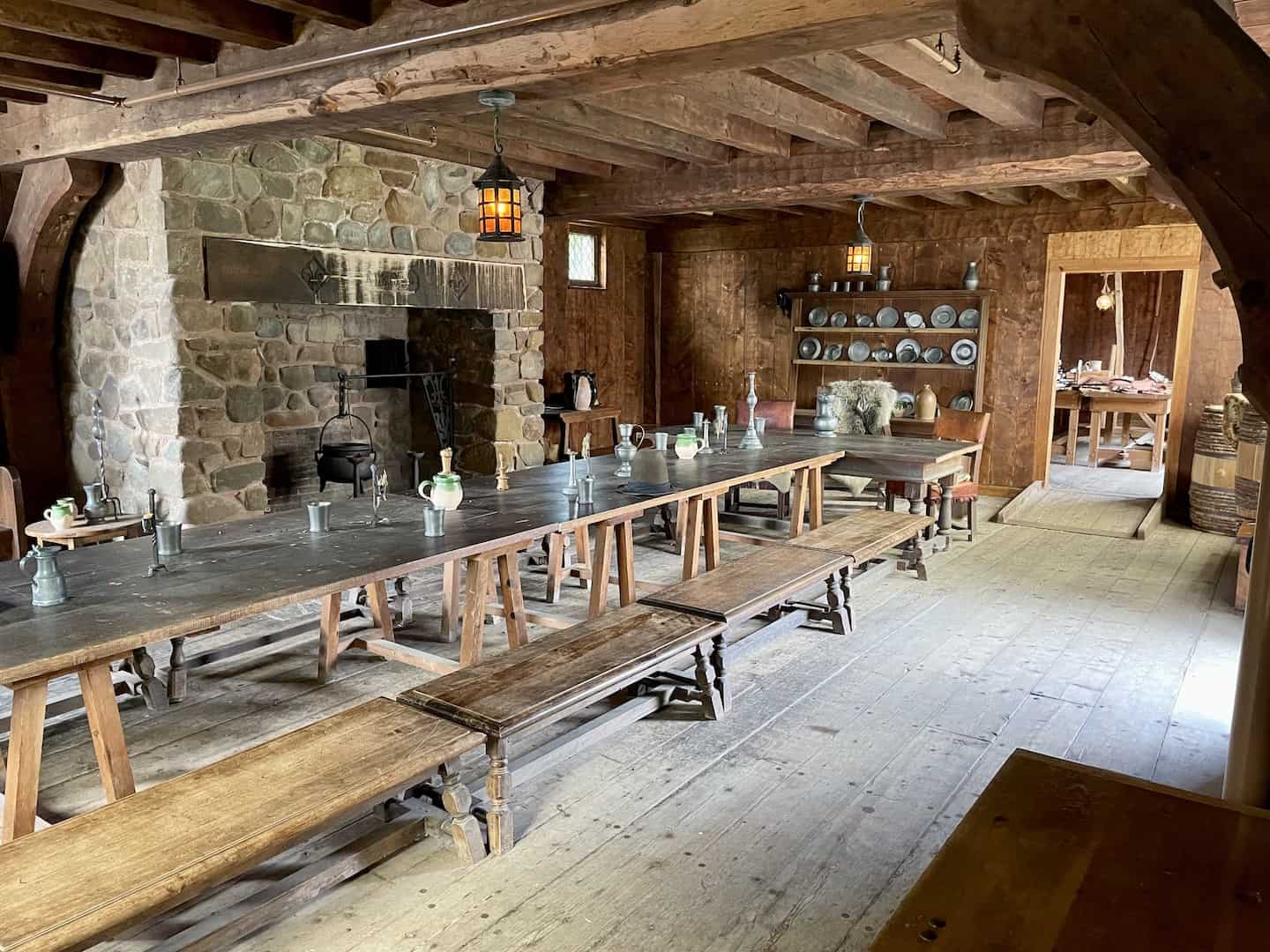
Fort Anne National Historic Site
The English built the first of five forts that would stand on the current Fort Anne site in Annapolis Royal. Previous forts were not built to withstand stormy weather and tidal changes. Today’s fort is a four-bastion fort that was built to protect the area from harbor attacks. The officer’s quarters from the late 1700s were renovated and serve as the visitor center and museum. The museum retells the history of the area from all perspectives including those who originally inhabited the area to the conquering French and English. Also on site is the stone magazine that stored gunpowder and other supplies. You can walk the grounds and read the interpretive signs on your own. There is an admission charge to visit the museum. Location: 323 St George St, Annapolis Royal, Nova Scotia | 902-532-2397
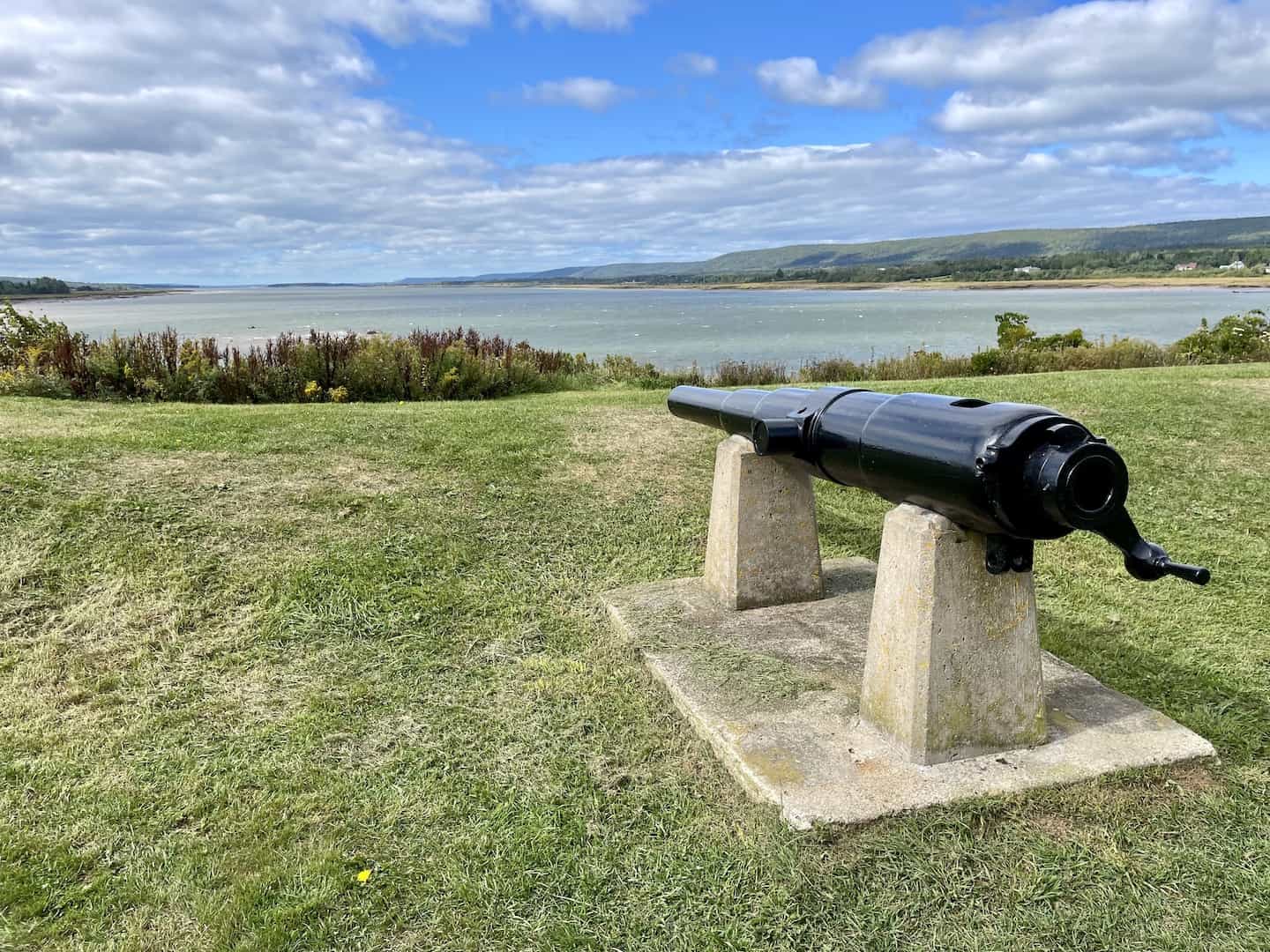
Grand-Pré National Historic Site
The Grand-Pré National Historic Site is a UNESCO World Heritage Site that details the lives of the original French settlers (who came to be known as Acadians). Although the region was initially settled by the French, treaties turned Nova Scotia over to the British, yet military skirmishes between the French and British persisted in the region. According to the British, the area included some Acadians on the French side. As a result, the British required unconditional loyalty oaths from all Nova Scotia residents including the Acadians, who refused. This led to the British decision to deport all Acadians. The deportation led some Acadians to settle in what was then French Louisiana and give that region, including New Orleans, a French twist to the local culture that endures to this day.
Begin at the visitor center which has an informative 20-minute video and a museum with exhibits. After leaving the visitor center, stroll the scenic grounds that include a memorial church and the statue of Evangeline. The statue commemorates Henry Wadsworth Longfellow’s fictional retelling of the Acadians’ plight in his poem, Evangeline, A Tale of Acadie. That poem helped to draw national attention to the exodus about a century after it took place. This historic site has cabins for visitors who want to lodge onsite. Location: 2205 Grand-Pré Road, Grand-Pré (near Wolfville, Nova Scotia) | 902‑542‑3631

After visiting the Grand Pre, you can drive a short distance to the Deportation Cross that stands near the shoreline where it’s thought the Acadians boarded boats during the expulsion. (If driving here, follow the directions along Wharf Road. Take a right down the dirt road just past the farm on the right; don’t go straight ahead. It looks like you’ll be turning into the farm, but you aren’t.)
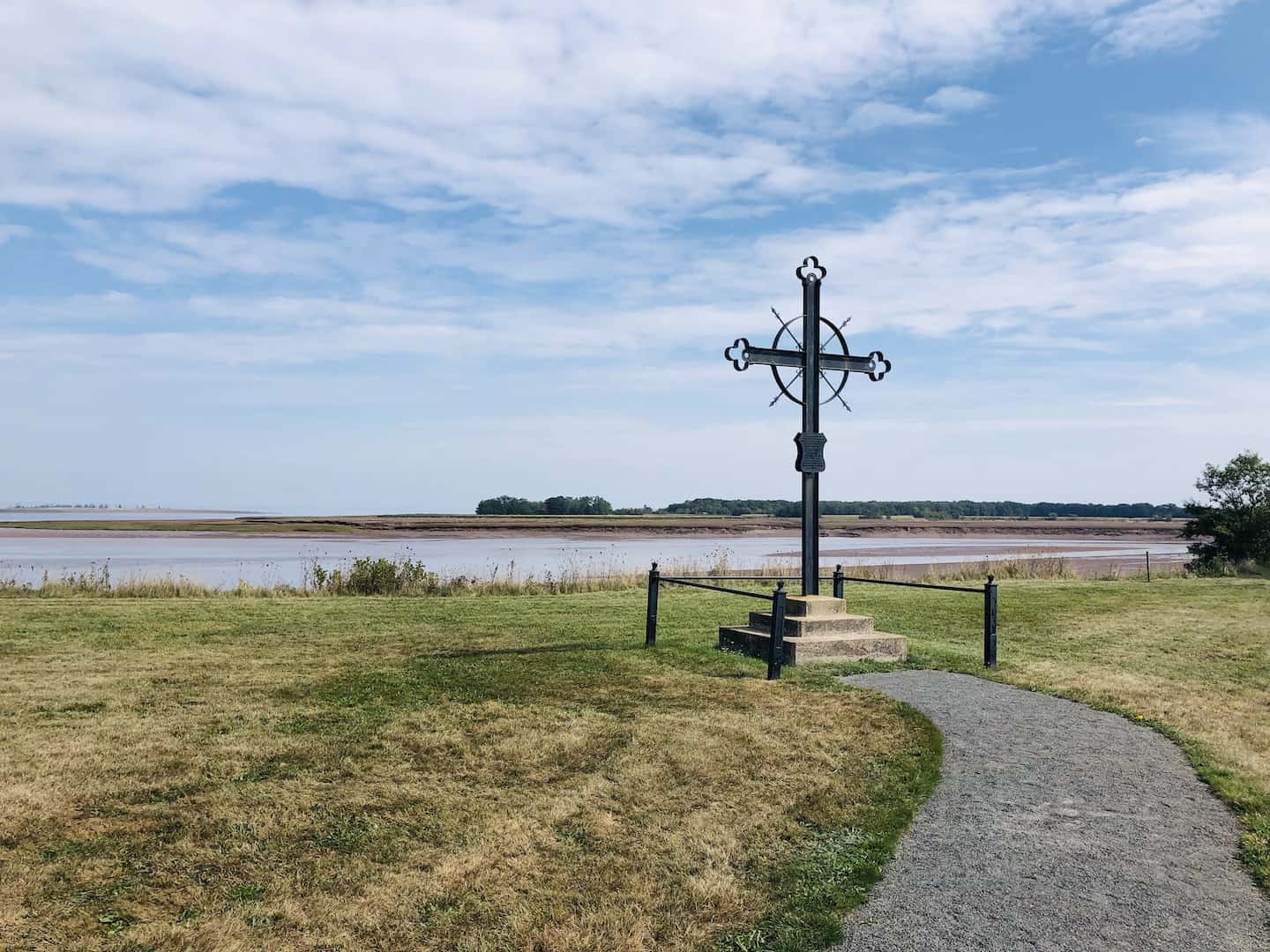
9. Feast on Famous Digby Scallops
On the shores of the Annapolis Basin, an inlet of the Bay of Fundy, Digby is a small, scenic fishing village famous for its scallops. Here are fleets of scallop fishing boats that harvest these delectable bivalve mollusks from the ocean floor. You’ll find the famous Digby scallops on the menu of restaurants all over the province, but we decided to drive here and take in the scene for ourselves. (We so enjoyed eating some giant Digby scallops at Shoreline Restaurant; if you go there, you need to walk into the Shoreline gift shop from the street as the waterfront restaurant is in the back of the shop.) Some folks visit Digby after disembarking from the ferry that carried them from Saint John, New Brunswick. Whichever way people arrive in Digby, the scallops do not disappoint.
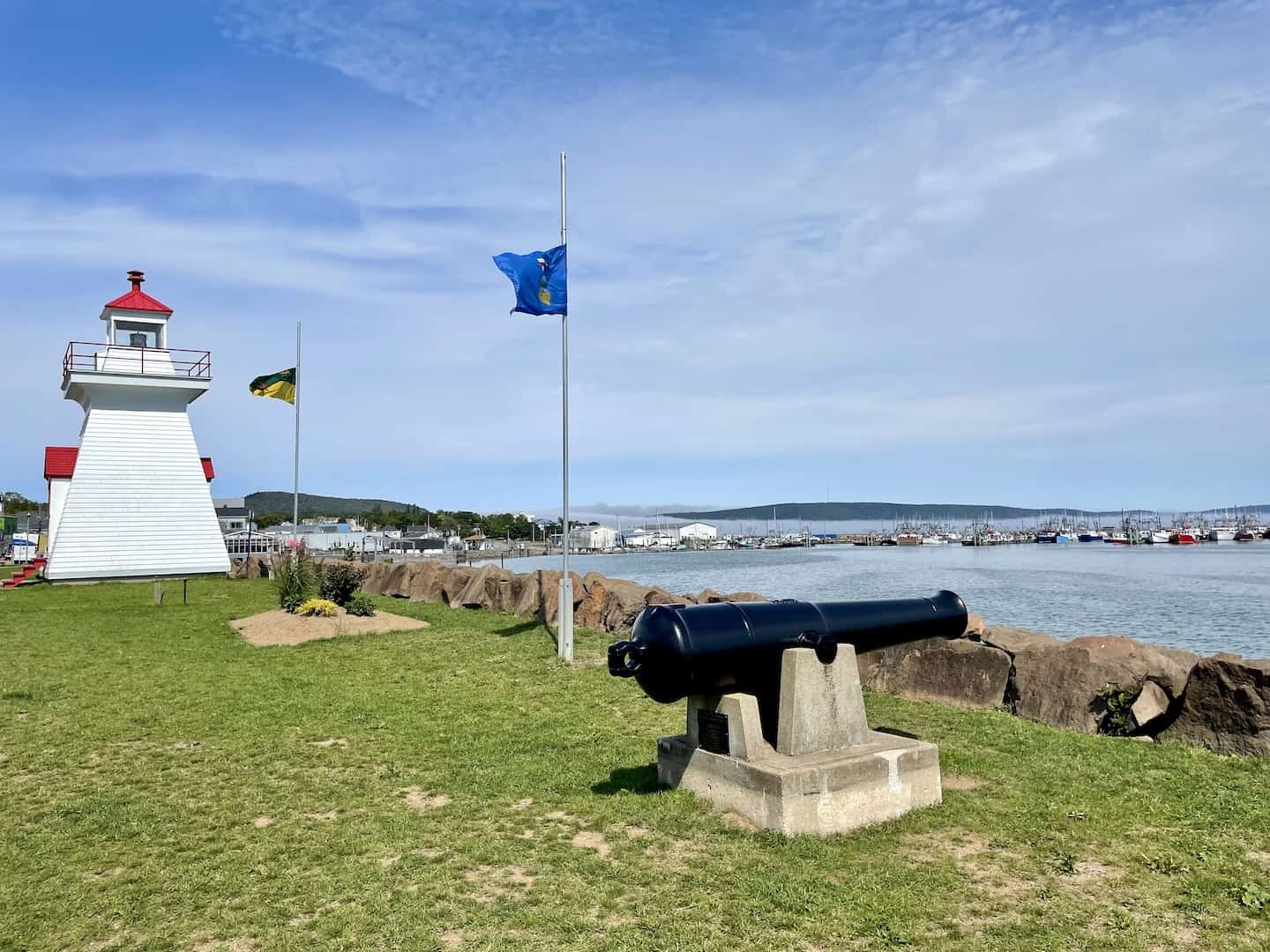
10. Go Whale Watching
Several species of whales – including the Minke, Humpback, Fin, and Right – enjoy the summer Bay of Fundy waters. There are a variety of whale-watching tour companies that depart from the Westport and Freeport areas — off the southern coast. Do an online search for a full list of options. (No direct links are included due to changes in operation for some companies.)
Nearby Attractions
Read more about other great places to visit in Nova Scotia:
- Balancing Rock: a Unique Rock Formation in southern Nova Scotia
- Five Best Wineries in Nova Scotia
- Halifax: Top Sights to See in Nova Scotia’s Capital
- Kejimkujik National Park
- Prince Edward Island Guide for a 2-Day Visit
Final Thoughts
My husband and I so enjoyed our exploration of the Nova Scotian Bay of Fundy coastline. We had a great time exploring the tidal bore and walking along the ocean floor – two highlights for us. We also enjoyed learning more about the interesting history of the area, relaxing at some wineries that offered delicious vintages and nice views, and hiking along impressive coastlines. This region has a great mix of activities – and you’re always close to incredible sea views!
For a complete listing of places to explore on the northern coast of the Minas Basin, check out the Cliffs of Fundy Geopark site.
Comments?
Feel free to share your thoughts and experiences from a visit to the Bay of Fundy along the Nova Scotian coastline. Your comments could help other travelers. 🙂


